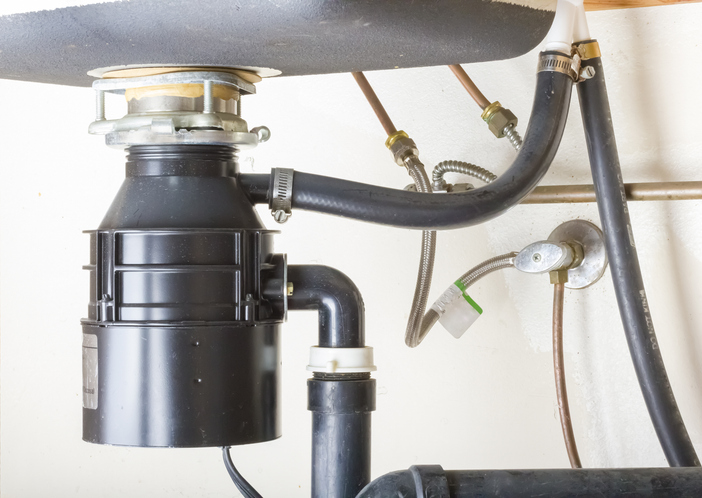Do you have a garbage disposal? Nearly half of all Americans do! Do you use your garbage disposal? Many people don’t, because they’re not sure what exactly can go down it and they are wary of costly repairs.
At Maertin Heating & Cooling, we know many homeowners think of a garbage disposal as a simple time saver – and many would like to rip it right out! Rather than scraping dishes into the garbage and ending up with a smelly bin, you can scrape your dishes into the sink and let the disposal pulverize the scraps – if you do it correctly. Using your garbage disposal properly protects your home’s plumbing and reduces methane emissions in landfills.
Garbage disposals attach to the drain of your sink and include a motor that drives a series of grinding wheels. Most Americans have basic ½ horsepower motors in what’s called a “continuous feed” disposal. These disposals can be run and filled as needed. Some people prefer the more powerful “batch feed” disposals that you fill completely and then process. These tend to be more expensive and harder to install, but are slightly safer and quieter; you have to cap the disposal for processing. Depending on your budget, you can get disposals with stronger motors, stronger component parts, and better sound insulation.
Garbage disposals are relatively easy to install, as most versions use a quick-attachment bracket to connect the appliance to the sink, but you will need to hire a licensed electrician to hard-wire the disposal and install the on/off switch.
Once you’ve got your disposal installed, you can begin washing a lot of your food waste down the drain. That food waste won’t go into a landfill to decay but it will go into the wastewater system, so be sure to avoid including any plastic or non-food items in your disposal
While your garbage disposal might be able to pulverize a lot of foods, even pulverized food scraps can cause plumbing problems. At the top of the list of foods to avoid putting in your disposal is fat, which can solidify and congeal in your pipes. Garbage disposals can process fatty foods, but the fat can recombine further down the pipes, creating clogs and backups. Avoid fibrous foods like celery or corn husks that can jam the grinding gears and cause clogging farther down your pipes. Similarly, very starchy foods like bread, pasta and potatoes can become gummy in the disposal and expand as they absorb water, causing clogs.
A scrape of rice at the end of your meal is okay, but throw that cold clumped container of leftover rice into the garbage, not into the disposal. The peel from one carrot is fine, but a heap of peels can be a problem.
Some foods are not a problem for your plumbing, but can be a problem for your disposal. Shellfish, eggshells, fruit and vegetable peels, and coffee grounds don’t get pulverized quite as easily and can get stuck in the grinding teeth, causing jams. Some manufacturers say it’s okay to put small bones and fruit pits in a garbage disposal, but others recommend only disposing of what you can easily cut with a knife. Check your disposal’s user guide to clarify exactly what you can put in your particular disposal.
Most garbage disposals can last about 10 years when properly used and maintained. Run your disposal regularly to keep all the parts moving and lubricated. Running lots of cold water while you use the disposal, and for at least a minute and a half after you turn off the disposal itself helps flush any debris that might cause jams. When odors build up, you can clean the appliance by pouring baking soda and vinegar into the drain and let it foam up completely before running the disposal, followed by cold water for at least 90 seconds.
Are you getting excited for Spring? So are we! Make sure your HVAC system is ready for warmer weather by scheduling a check up today! Call 708-479-9350 or click here to contact us.




